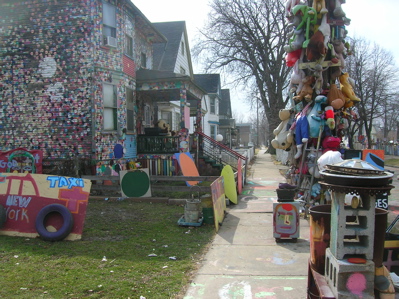
Color: The visual quality of objects caused by the amount of light reflected by them. Color is an element of art. Another word for color is hue.
Colorist: A person who uses color with great skill.
Color Scheme: A plan for combining colors in a work of art. Artists know that certain colors and color schemes can create certain moods or feelings in their artworks.
Pallette: A flat board on which a painter mixes color. Sometimes it refers to the color choices of an artist or designer.
Primary Colors: Colors that cannot be mixed from other colors. They are the parents of other colors. The primary colors are red, yellow, and blue.
Secondary Colors: Colors that are created by mixing two primary colors. These are the first born children of primary colors. Secondary colors are orange, green, and purple.
Intermediate Colors: Intermediate colors are colors created by mixing a primary and a secondary color. Intermediate colors usually have two colors in their name. Red-Orange, Blue-Violet, and Blue-Green are examples of intermediate colors.
Monochromatic Colors: A color scheme that uses different values of a single hue by showing tints and shades of the same color. During Picasso's Blue Period, he used a monochromatic color scheme for a series of paintings. He painted everything blue but used tints and shades of blue.
Complementary Colors: Colors that are opposite each other on the color wheel. An artist may slip in complementary colors somewhere in a picture to make an area of a picture "pop" or he/she may do a complete color scheme of complemenatary colors.
Tinted Colors : Colors that are lightened by adding white. For example- tinted red is pink. Tinted blue is sky blue.
Shaded Colors: Colors that are darkened by adding black. For example- shaded red is burgundy or maroon. Shaded blue would be navy blue or dark blue.
Neutral Colors: Universal colors. Black, white and gray are considered neutral colors. Some artists used tints and shades of brown as neutral colors.
Warm/Hot Colors: A family of colors that brings to mind warm feelings, things, and places. Sometimes used in an area of a picture to draw attention. Warm colors include reds, yellows, and oranges (the colors you would find in a fire). Warm colors are considered "aggressive" and come forward in a picture.
Cool Colors: A family of colors that brings to mind cool and soothing things, places, and feelings. Sometimes even sad. Cool colors are considered "passive" and would recede or move away from the eyes of a viewer. Blues, greens, and violets are considered cool colors.

























